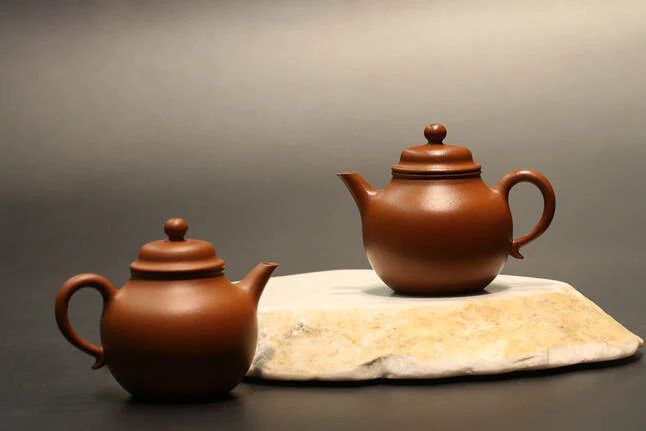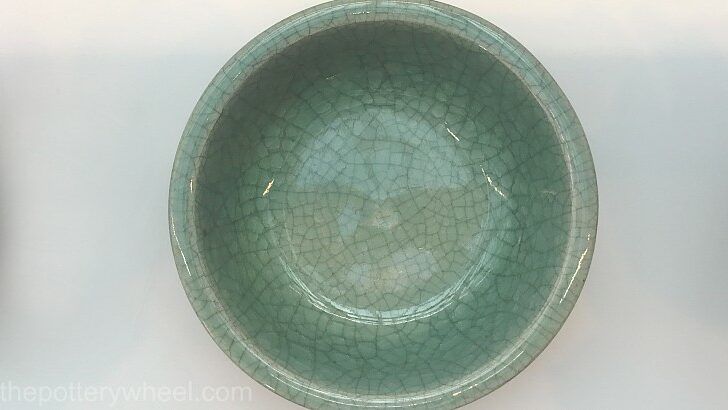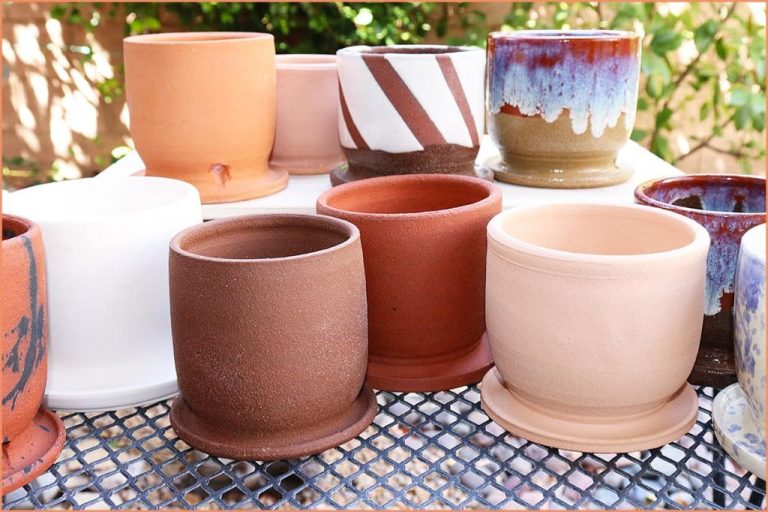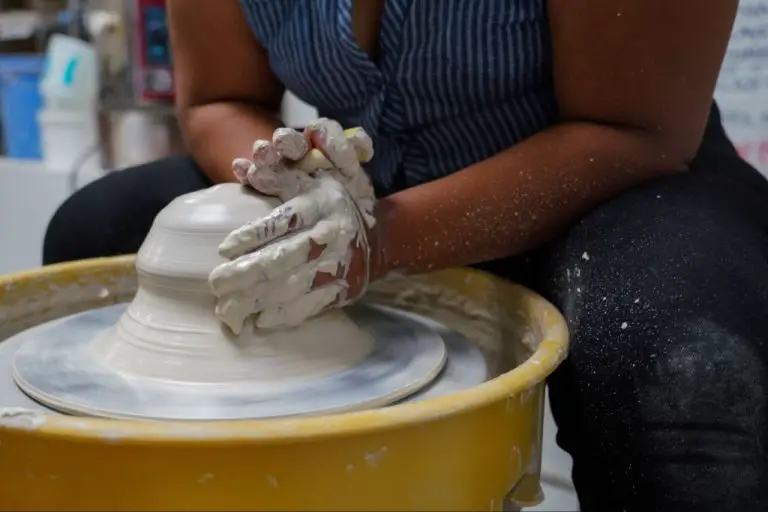Can You Use A Clay Teapot?
Clay teapots have a long history spanning cultures across Asia, the Middle East, and Europe. The first teapots made from clay emerged in China during the Han Dynasty around 200 BCE. These early teapots were made from red clay called Yixing clay that was known for retaining heat and imparting flavor into the tea. The teapots were handmade and prized for the artistry in their traditional shapes and designs.
From China, the use of clay teapots spread along the Silk Road trade routes through central Asia and the Middle East. In Japan, clay teapots have been crafted for the intricate and refined Japanese tea ceremony for centuries. In Morocco, richly decorated clay teapots are ubiquitous for serving sweet mint tea.
Today, artisans around the world still handmake clay teapots that range from traditional to modern in style. Many clay teapots are valued as much for their beauty and craftsmanship as their functionality in brewing tea. When used properly, clay teapots enhance the flavor of teas and provide a soothing ritual for enjoying tea.
Source: http://www.egovframe.go.kr/wiki/lib/exe/fetch.php?media=http%3A%2F%2F%D1%88%D0%BA%D0%BE%D0%BB%D0%B093.%D1%80%D1%84/t6L15fe22r/
Benefits of Clay Teapots
Clay teapots offer some unique benefits compared to teapots made from other materials like glass or stainless steel. The natural clay is porous, which allows oxygen to reach the tea leaves during brewing. This helps the flavor unfold and develop more complexity. The pores in the clay also help regulate the temperature of the water. Clay absorbs some of the heat, preventing the water from getting too hot and causing bitterness in the tea.
The composition of the clay can also enhance the taste of certain types of teas. For example, Yixing clay teapots from China are meant for brewing oolong and black teas. The clay interacts with the teas to bring out deeper, richer notes over multiple uses. Well-seasoned Yixing teapots are prized for this flavor enhancement. Japanese Kyusu teapots made with Tokoname clay tend to pair best with green teas.
Compared to glass or metal, clay provides a more natural brewing experience. The tea takes on subtle elements from the clay material itself. Many tea connoisseurs prefer this to the more sterile experience of stainless steel or glass. The artisanal look and feel of clay teapots also adds to the traditional tea ceremony experience.
Sources:
https://tecompanytea.com/blogs/tea-atelier/how-to-care-for-your-clay-teapot
Considerations for Using Clay Teapots
Clay teapots are more fragile than glass or porcelain teapots. They can crack or break if dropped. Special care should be taken when handling and storing clay teapots.
Clay teapots are excellent at retaining heat. The thick clay walls keep the tea hot for a long period of time. This allows the tea leaves to steep and infuse fully, releasing their maximum flavor. However, the heat retention can also continue brewing the tea leaves after the desired steeping time, causing over-steeping. Pay attention to steeping durations when using a clay teapot.
Clay teapots are porous and can absorb flavors and odors from the tea brewed in them over time. This allows the development of a beautiful tea patina that enhances the flavor of subsequent brews. However, strong flavored teas like pu-erh can permanently impart their taste to the teapot. Consider dedicating separate teapots for mild and strong teas.
Uncoated clay teapots require “seasoning” before first use, which involves multiple rinses with boiling water to seal the pores. Always check the manufacturer’s directions on seasoning a new clay teapot.
Some low quality clays may contain lead or other impurities that can leach into the tea. When buying clay teapots, especially inexpensive ones, check that they are lead-free and made from food-safe clay. Reputable sellers will often provide material details and origin information.
As highlighted in this Reddit discussion, cheap clay teapots run a higher risk of negatively impacting tea flavor or posing health hazards. Invest in a quality clay teapot from a trusted seller.
Cleaning and Caring for Clay Teapots
Properly cleaning and caring for your clay teapot is important for maintaining its beauty and function. It is recommended to handwash clay teapots rather than put them in the dishwasher. According to The Tea Company, clay teapots should be rinsed with warm water after each use to remove any remaining tea leaves. Use your fingers to gently remove leaves, or chopsticks or bamboo tweezers if the leaves are still hot (Source).
After rinsing, wash the teapot and lid with dish soap and warm water using a soft cloth or sponge. Avoid abrasive scrubs. Rinse and dry the teapot thoroughly after washing. Allow it to air dry completely before storing to prevent mold or musty odors. Never put a clay teapot in the microwave or oven to dry. Repeated quick changes in temperature can cause cracks (Source).
Selecting a Clay Teapot
When selecting a clay teapot, there are a few key factors to consider:

Type of Clay – The most prized clay for teapots comes from the Yixing region of China. This purple clay, also known as zisha or Yixing clay, is known for its ability to absorb tea flavors and oils over time. Other common clays are duanni, zhuni, and hongni. Research which clay best suits the type of tea you plan to brew.
Size – Consider the amount of tea you typically brew and choose a size accordingly. Larger teapots around 300ml are good for sharing tea, while smaller 100ml ones are ideal for solo brewing. Make sure to match the size with the amount you want to brew.
Design – Pay attention to the shape, spout style, handle, and other design elements based on your preferences. Common styles include guan yin, xi shi, and shui ping. The design impacts the tea brewing experience.
Shop from reputable sellers and authenticate that you are purchasing a genuine Yixing clay teapot. Read reviews and inspect details like markings on the bottom when selecting. Consider teapots handmade by traditional craftmasters for best quality.[1]
Using a Clay Teapot
Using a clay teapot properly is key to brewing an excellent cup of tea. Here are some tips on water temperature, brewing, and pouring:
Many high quality teas, like green tea and white tea, require lower brewing temperatures, around 160-180°F. Boiling water can burn delicate leaves and create a bitter brew. Clay helps regulate temperature so the water cools slightly between boiling and pouring. Let boiling water sit for 2-3 minutes before pouring into a clay pot to achieve optimal brewing temperature.
To brew, add the appropriate amount of tea leaves to the pot according to the type of tea and strength desired. Pour hot water over the leaves and allow them to steep for the recommended time, typically 3-5 minutes. The clay absorbs some of the tea oils and flavors for a richer brew.
When pouring tea from a clay pot, pour slowly and evenly in a circular motion to distribute the brew. The spout should point away from the cups at first, then rotated inward once pouring begins. This prevents splashing and overflow.
Source: https://dominiontea.com/how-to-use-a-yixing-teapot/
Pairing Teas and Clay Teapots
Certain types of tea are especially complementary when brewed in a clay teapot. The porous nature of clay allows subtle flavors to develop during steeping that enhance particular teas. Here’s an overview of the best tea pairings for clay teapots:
Oolong teas like Tieguanyin pair wonderfully with clay. The clay helps bring out the floral and fruity notes inherent in oolongs. Yixing teapots are traditionally used for oolong tea in China. According to Teavivre, Yixing teapots made from higher-quality zi sha clay do an excellent job of bringing out an oolong’s natural fragrance.
Black teas also complement the brewing process in clay teapots. The full bodied, malty character of black teas shines when brewed in clay. Teavivre recommends a flat Yixing teapot for oxidized black teas to allow the leaves to unfurl and deliver robust flavor.
Pu-erh and other dark teas are also nice choices for clay teapots. The earthy, woodsy tastes of these teas pair well with brewing in natural clay. According to Mud and Leaves, the porous clay helps concentrate the rich flavors of aged pu-erh.
Pro Tips for Clay Teapot Use
Here are some expert tips for getting the optimal experience from your clay teapot:
According to An Expert Guide to Zhu Ni Clay Yixing Teapots, clay teapots made from Zisha clay should be seasoned before first use to help the flavors develop over time. Season the teapot by brewing several batches of tea in it before drinking the tea. The tea polyphenols help coat the inside of the teapot.
Only use one type of tea in each clay teapot, according to tea experts. The pores in the clay will absorb the flavor of the tea. Using the same type of tea leaves the aroma and subtle nuances to build over many uses.
Allow the teapot to air dry completely between uses. Do not leave tea or water sitting in the teapot for long periods. Fully drying the teapot will help prevent mold growth.
Avoid drastic temperature changes which can cause cracks. Do not put a hot teapot straight into cold water. Allow it to cool gradually before washing.
Regularly inspect the teapot for small hairline cracks. Repair minor cracks soon after they appear with special clay filler to prevent them worsening over time.
Experts advise gently handwashing clay teapots with a soft sponge. Avoid abrasive scrubbing which can damage the clay surface.
With proper care and use, a quality clay teapot can last for many years and provide an optimal tea drinking experience.
Common FAQs
Using clay teapots often comes with many questions, especially for those new to brewing tea this way. Here we address some of the most frequently asked questions about clay teapots:
How do you season a new clay teapot? Seasoning helps remove any impurities and prepares the teapot for brewing tea. To season, boil water in the teapot 2-3 times, pouring out the water each time. This opens the pores of the clay and removes odors or flavors.
Should you use soap to clean a clay teapot? Avoid using soap on clay teapots as it can leave residue. Instead, rinse with hot water after each use. For a deeper clean, use a soft cloth or tea brush with baking soda and warm water to gently scrub the interior.
How often should you boil a clay teapot? It’s recommended to do a boiling water rinse about once a week to keep the teapot seasoned. More frequent boiling can lead to cracks over time.
Is it safe to brew different types of tea in a clay teapot? Yes, you can safely brew any type of tea in a clay teapot. However, over time the clay will absorb the flavors and aromas of the teas. If you want to preserve the original tea flavor, consider having separate teapots for different teas.
Why do some clay teapots change color over time? Natural clay is porous and will absorb the oils, tannins, and pigments of brewed tea. This enhances the flavor but causes the clay to darken and develop patina over many uses. It’s a natural effect that doesn’t harm the teapot.
Can you put a clay teapot in the dishwasher? Avoid putting clay teapots in the dishwasher, as the high heat and water pressure can damage them. Always hand wash clay teapots to preserve their integrity.
Conclusion
In conclusion, clay teapots offer a number of unique benefits for tea brewing. Their porous material retains heat well to keep tea at the proper steeping temperature. The clay also absorbs tea oils and flavors to enhance the brew over time. However, clay teapots require special care – use filtered or spring water, hand wash only, season before first use, and avoid dramatic temperature fluctuations.
For most purposes, a medium-sized unglazed Yixing teapot or Japanese kyusu offers the best versatility across different types of tea. Choose an authentic clay teapot made with high-fired stoneware. With proper use and care, a quality clay teapot can last for many years of enjoyable tea brewing.



